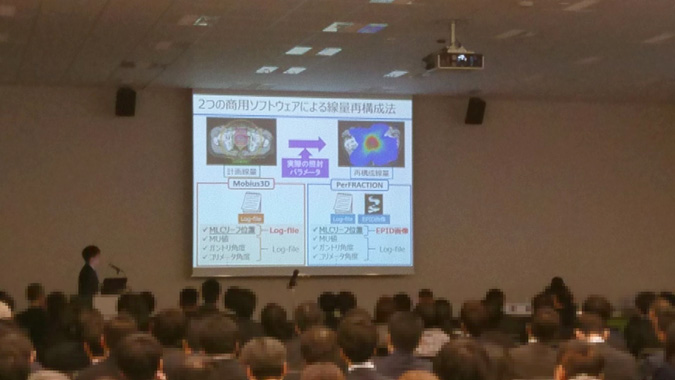2017.11.17 ~ 11.19: The 30th Annual Meeting of the Japanese Society for Radiation Oncology
The 30th Annual Meeting of the Japanese Society for Radiation Oncology (JASTRO) held in Knowledge Capital, Osaka, Japan. Dr. Kadoya(Assistant professor), Mr. Abe(D4), Mr. Nakajima(D2), Mr. Kajikawa(M1), Mr. Sato(M1) and Mr. Matsumoto(M1) have attended it for presentation in Knowledge Capital, Osaka, Japan on November 17-19, 2017.
■Date: 11.17-19,2017
■Venue: Knowledge Capital, Osaka, Japan
■Conference name:The 30th Annual Meeting of the Japanese Society for Radiation Oncology

Tomohiro Kajikawa(M1)
This is my first report. I am Tomohiro Kajikawa, a first-year master’s student who almost lost his cell phone on the last day of this conference.
I am pleased to report that five members of the Medical Physics Group, including Dr. Kadoya, Mr. Abe (D4), Mr. Nakajima (D2), and Mr. Kajikawa (M1), Mr. Sato(M1), and Mr. Matsumoto (M1), gave presentations at the 30th Japanese Society of Radiation Oncology (JASTRO) held at Knowledge Capital (Osaka) from November 17 to 19, 2017. We are pleased to report that five of us have made presentations.
Since the establishment of JASTRO, a large increase in the number of new radiotherapy patients has been observed. On the other hand, the gap in radiotherapy coverage between Japan, the U.S., and Europe (25% in Japan, 60-70% in the U.S. and Europe) has not improved, and the challenge is how to overcome this gap and provide high quality radiotherapy. Against this background, the theme of this year’s conference was “Challenge to Expand the Role of Radiation Oncology in the Era of Big Data.
I learned a lot about the latest findings in radiotherapy, which was very informative. I was particularly impressed by the lecture on survival prediction using support vector machines. This was a study to predict survival after radiotherapy for glioma patients by extracting features from both DVH and clinical information to predict prognosis. Combining both types of information significantly improved the prediction accuracy, and I felt that combining various types of information would be useful for deep learning, which is my research theme.
I also gave a poster presentation on “Preliminary study for auto radiotherapy planning method using convolutional neural network for IMRT prostate cancer patient. I also made a poster presentation on “Preliminary study for auto radiotherapy planning method using convolutional neural network for IMRT prostate cancer patient. I believe that the use of artificial intelligence may make it possible to automate radiotherapy planning with even higher accuracy. As an initial study, I reported on whether deep learning can be used to determine the degree of difficulty of a plan for IMRT for prostate cancer. I also had the opportunity to hear from professors who are researching deep learning, and I was able to discuss with them some of the points I had questions about, making it a very meaningful time. Since deep learning is a new technique that has not been reported on much at this conference, I hope to continue to present the results of my research at conferences such as this one.
My fellow first-year master’s students also presented their research results and had lively discussions with the professors, although it was their first time to present at a conference.
Finally, I gained valuable experience and knowledge for my future research at JASTRO. I would like to apply the knowledge I gained at this conference to my own research and clinical practice. I would like to take this opportunity to thank everyone who gave me this opportunity. Thank you very much.

Oral and poster presentation

Meeting with companies
